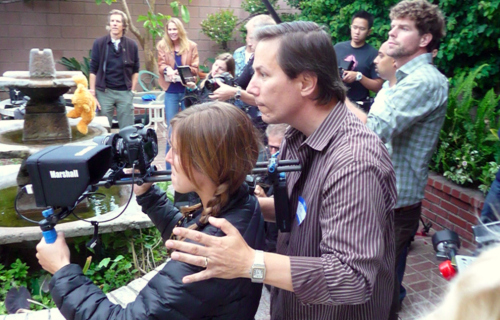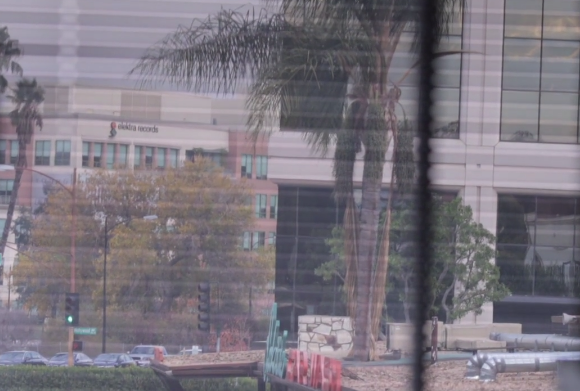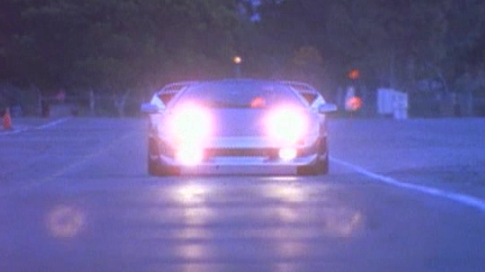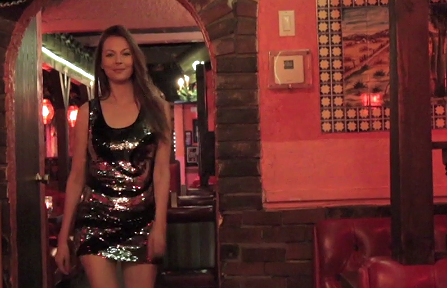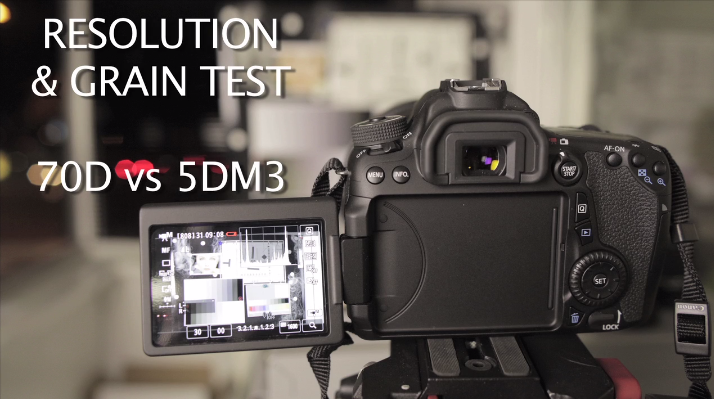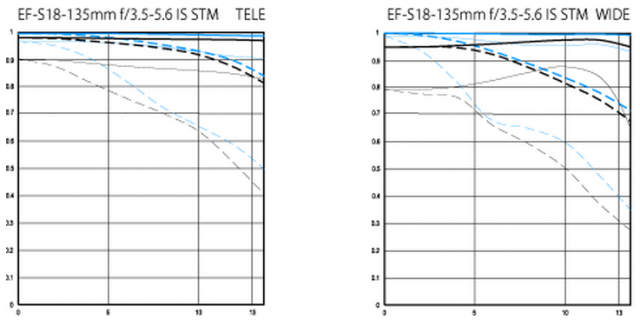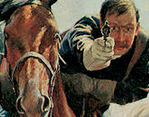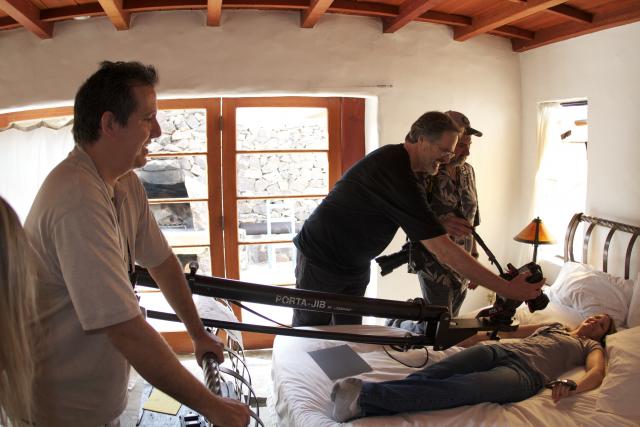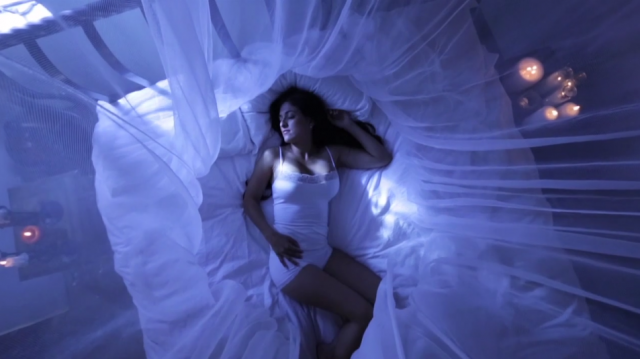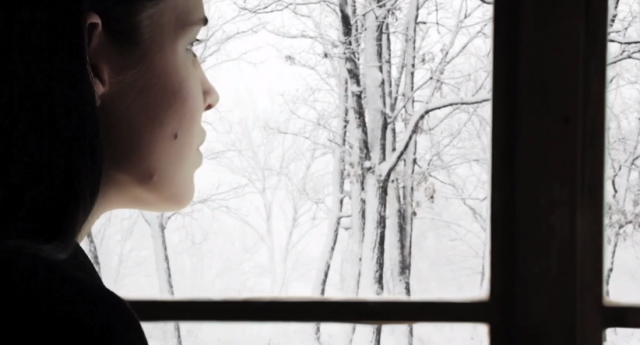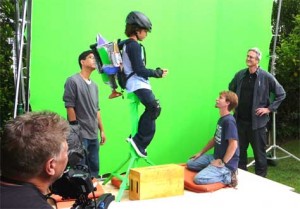
You might hear opinions that the Canon 5D’s 4.2.0 color space can’t deliver good keys for green screen. Well, here’s the word from the trenches. Something you can count on. The Canon 5D MarkII’s green screen shots keyed beautifully. (for more data on 4.2.0 color space got to bottom of this article*)
The Association did green screen tests prior to the shoot and they looked great. So, the client gave us the “green light”.
Green Screen shot with Canon 5D.
GREEN SCREEN LOOKING GOOD…
We shot the green screen on location. The sun was our light source. So we could shoot at ISO 100. White cards below and to the sides of the talent gave a nice edge. As we tell our students in our Canon Bootcamps, always triple save your shots. So, while we were backing up the shots onto two other hard drives, we checked to make sure the key was good (see below).
EVERY WEEK A NEW SHOOT…
We are shooting with the Canon 5D or 7D every week. Green screen, under water, on jibs, process trailers, motorcycles…and we’ve been nothing but pleased with the results.
THE “LOOK” of 35mm film for half the price…
Our clients love how the Canon maximizes their budget and gives them shots as pretty as 35mm film.
IT’S DIGITAL FILM…
We totally agree with Gale Tattersall (D.P. on “House, M.D.”) and Shane Hurlbutt (D.P. on “Terminator: Salvation” and his famous “The Last Three Minutes”) – the Canon DSLR delivers images that bring the excitement back to fine filmmaking. The Canon delivers rich blacks with no noise in low light conditions. It doesn’t do “video freak out” when a bright light source enters the frame. It has a delicious, short depth of field. Plus, editing is a snap. This camera’s a game changer.
YOUR CHOICE: Take our Canon Camera Classes OR Hire one of our trained Canon DSLR crews:
Either way, give us a call 818 841-9660.
It’s the future. It’s cool. And it’s here. Tested. Proven. Fantastic.
*….about 4.2.0 color space. The issue is dealt in depth in the blog <http://www.cinema5d.com/viewtopic.php?f=64&p=76648> , but the simple answer is “the workflow that works the best for us (for RedOne and 5D mark II footage) is to transcode the footage to ProRes 4.2.2. Of course we could do 4.4.4 but we decided that it was a bit overkill, considering the fact that at the end, it will be at best some mpeg4 from the local broadcasters (digital tv).”“The reason why we convert the 5D files to ProRes is the ability the ProRes has to not deteriorate with generations (renders, movies, etc). Also, when everything is native to the sequence setting, rendering is kept to a minimum. Everything that has to be rendered also (subtitles, texts, pictures, etc) all look better when working in a prores sequence compared when we tried in a sequence with the native clips from the 5D (h264).”

